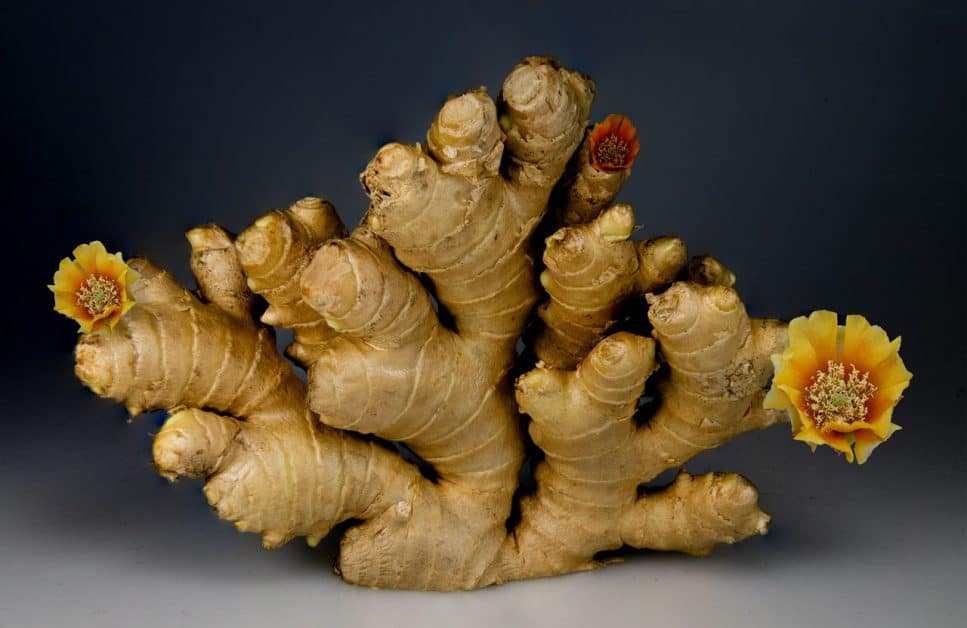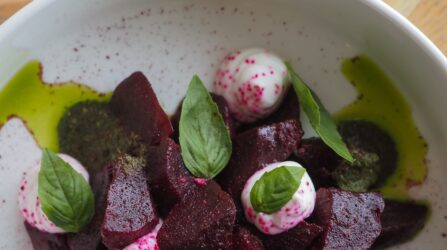Home > Hormones > Hormone health & solutions > The History of Ginger: The Ancient Times Favourite Spice.


Zingiber officinale – The little root with a long saga. The history of ginger spans a good 5000 year. The long and consistent history of ginger can be traced around the world in almost every country and culture; used in just about everything from food, healing and witchcraft – there is an old superstition that throwing a ginger root into the sea can calm a thunderstorm.
Ginger is a rhizome of a flowering plant with the same name and is a member of the same plant family as for example cardamon and turmeric. It has a spicy aroma due to the presence of ketones and has been used as a spice and in medicine since the break of dawn. Ginger has many uses for various reasons along with various forms. When it is young it is juicy and fleshy it’s referred to as fresh ginger and many recipes today call for it as an ingredient. When it is left to mature it dries and can then be made into a powder which in turn can be used as a spice, it is in this form we use it for example in gingerbread cookies and ginger ale.
Originating in Southeast Asia, domesticised by the Austronesian people, it can be traced as one of the earliest spices exported to Europe during the spice trade, valued for medical and culinary purposes in China, Ancient Greece and Rome, the Middle East and the Mediterranean. Amongst the Romans, it was an expensive spice, so was regarded as a symbol of wealth. Which is part of what makes the history of ginger so very interesting.
As traditional healing and herbalism has gone on highs and lows over the centuries, ginger had maintained a respected position in the minds and pantries of people across the globe.
What is it about this gnarly little root that makes it such a long lasting and favoured spice?
Well, good folks gather round. As well as giving much needed flavour and heat to your favourite baked goods; ginger contains gingerol, a compound that we associate with the healing properties of ginger. Ginger has been used for over 5000 years to treat a range of ailments and so today there are many ailments ginger is still reputed to help with. Most commonly recognised are these:
The most common and well established use of ginger throughout history must be for that of alleviating nausea and actually vomiting. Because of this it is well known for helping to alleviate morning sickness. Ginger, especially in a tea with some lemon, is a great way for keeping nausea and vomiting at bay. Works well for seasickness too, if you happen to be a sailor or going on a ferry at some point.
Ginger has anti-inflammatory properties that mean it is great for reliving pain in tired muscles. It can also help decrease inflammation and swelling and in some cases osteoarthritis and rheumatism. It is also reported to be just as useful as Ibuprofen in easing menstrual pains. Inflammation is believed to be at the cause of health issues such as heart disease, so a little ginger every now and then can help you overall.
I, for one, eat a lot this time of year. Not in the festive season anymore but in the cold and rain a good roast dinner is always welcome. If you happen to overindulge on potatoes or pie this January and end up feeling unsettled in the gut, try a little ginger to give your digestive system a nudge in the right direction.
Ginger is a diaphoretic, which means it makes you sweat. So if you have a cold or flu, ginger can help you sweat it all out.
As an essential oil on the skin, ginger’s antiseptic qualities make it great for healing acne and those aforementioned anti-inflammatories mean it leaves skin soothed and healed. Full of antioxidants, ginger oil can help improve skin elasticity and give your complexion a little boost at the same time.
Yes, you heard right, you can grow your own ginger! All you need is a fresh, organic root, and you can cultivate and grow your own ginger plant. There are plenty of guidelines from real life professional gardeners on how to do this properly.
So, ginger. A long lasting and unifying little thing that has stood the test of time. Grow some in your garden, keep some in your kitchen, brew some in your tea; it’s a useful and resourceful spice to have at hand, whether your healing, casting, or simply making your grandmother’s famous gingerbread.
Have you used ginger to alleviate any pain or conditions lately? Let us know in the comments below.

-


Dr Singh is the Medical Director of the Indiana Sleep Center. His research and clinical practice focuses on the myriad of sleep.

Understanding the female libido Before we can answer, “Does progesterone increase sex drive?” it’s important to gain a better understanding of what a “sex drive” means. The female libido or sex drive is how much you desire sexual activity. Every

Why am I so hungry before my period? Women who experience an increased appetite before period starts can feel frustrated that they’re craving foods they don’t normally eat. You may be wondering, “Why do I eat so much before my

Understanding cycle syncing workouts Did you know that evidence shows a link between the impact of exercise and menstrual cycle phases in women? It’s true. Women are at a higher risk of foot and ankle injury during workouts than men,
Hormona© 2025, All Rights Reserved
Privacy Overview
| Cookie | Duration | Description |
|---|---|---|
| cookielawinfo-checkbox-analytics | 11 months | This cookie is set by GDPR Cookie Consent plugin. The cookie is used to store the user consent for the cookies in the category "Analytics". |
| cookielawinfo-checkbox-functional | 11 months | The cookie is set by GDPR cookie consent to record the user consent for the cookies in the category "Functional". |
| cookielawinfo-checkbox-necessary | 11 months | This cookie is set by GDPR Cookie Consent plugin. The cookies is used to store the user consent for the cookies in the category "Necessary". |
| cookielawinfo-checkbox-others | 11 months | This cookie is set by GDPR Cookie Consent plugin. The cookie is used to store the user consent for the cookies in the category "Other. |
| cookielawinfo-checkbox-performance | 11 months | This cookie is set by GDPR Cookie Consent plugin. The cookie is used to store the user consent for the cookies in the category "Performance". |
| viewed_cookie_policy | 11 months | The cookie is set by the GDPR Cookie Consent plugin and is used to store whether or not user has consented to the use of cookies. It does not store any personal data. |
